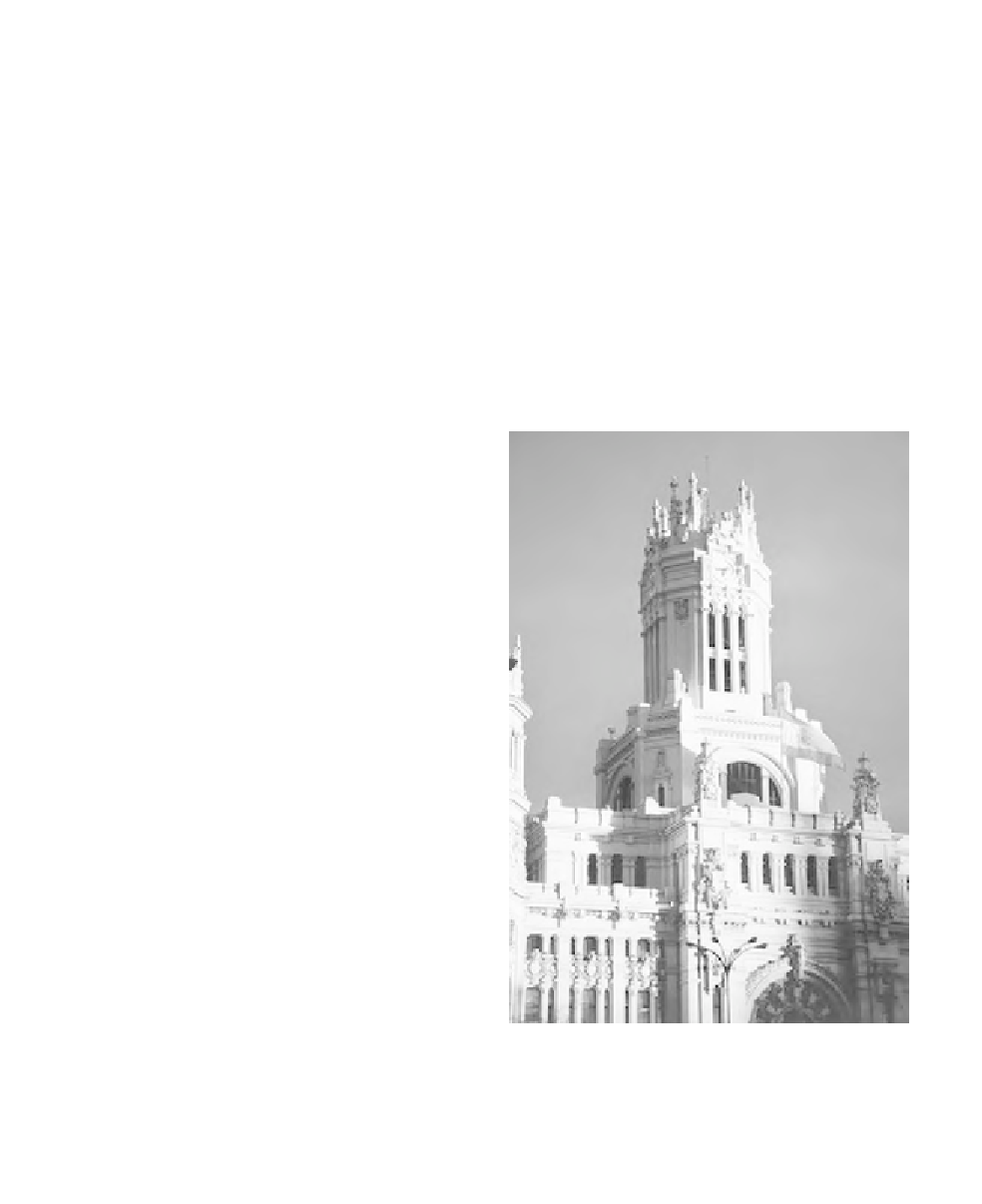Travel Reference
In-Depth Information
Madrid
Originally a Moorish fortress, Madrid passed
under the control of C
ASTILE
in 1082 but
was not a major center of Spanish trade or
government until P
HILIP
II made it his capi-
tal in 1561. Due to its central location and
the monarchy's determination to curb
regionalism Madrid gradually developed as
the principal city of Spain as well as its seat
of government. The B
OURBON
dynasty was
particularly committed to its embellishment
with palaces, churches, and other public
structures during the 18th century. The citi-
zens of Madrid undertook a fierce resistance
the world. He proved more prophetic,
however, when he suggested that militant
B
ASQUE
NATIONALISM
would continue to
undermine the sound regionalist solutions
set forth in the constitution.
Madeira
This overseas province of Portugal lies in
the North Atlantic, some 400 miles west of
the Moroccan coast. An archipelago con-
sisting of the main island of Madeira and its
smaller neighbor, Porto Santo, as well as
several uninhabited islets, it has a total area
of 308 square miles. The first outpost of
Portugal's seaborne empire, Madeira
(named for its wooded terrain) was discov-
ered in 1420 and promptly cleared for agri-
cultural settlement with a burning off of its
forests that took some seven years to com-
plete. Sugar plantations, based on crops
imported from Asia, flourished here and
became the point from which sugar was
introduced into the New World. A wide
variety of agricultural products, both of the
semitropical and temperate zones, has been
cultivated in Madeira, with the production
of wine grapes being particularly successful.
Madeira wine has carried the name of this
island far and wide. It became popular not
only in Europe but in the New World,
where the long voyage across the Atlantic
was believed to have added a particular,
desirable flavor. Unlike many other Portu-
guese acquisitions, Madeira has remained
firmly attached to the mother country for
more than five centuries, aside from a Brit-
ish occupation between 1807 and 1814 to
keep the archipelago from falling into
Napoléon's hands. By the beginning of the
21st century the population of Madeira had
grown to more than a quarter of a million.
Post office building in Plaza de las Cibeles,
Madrid
(Getty)

Search WWH ::

Custom Search